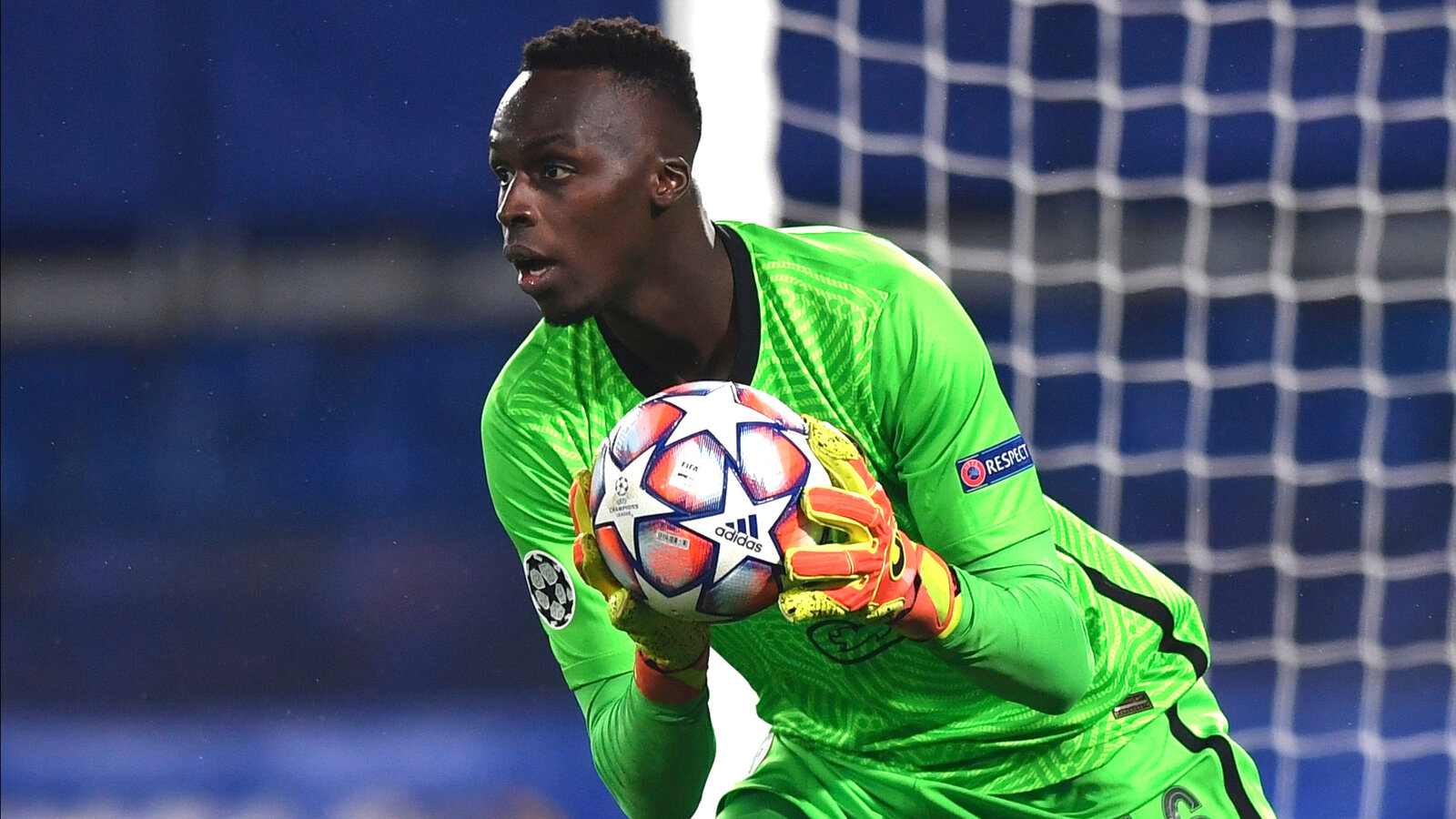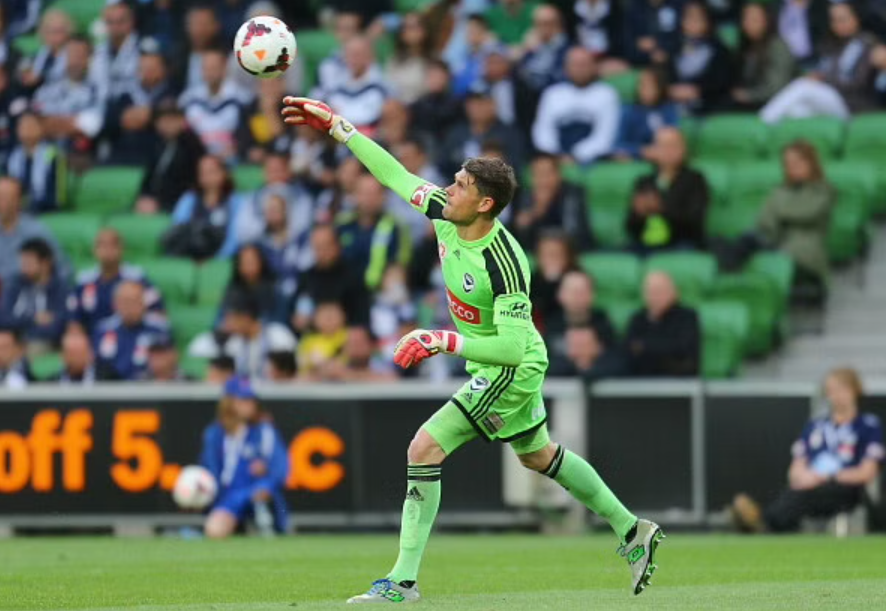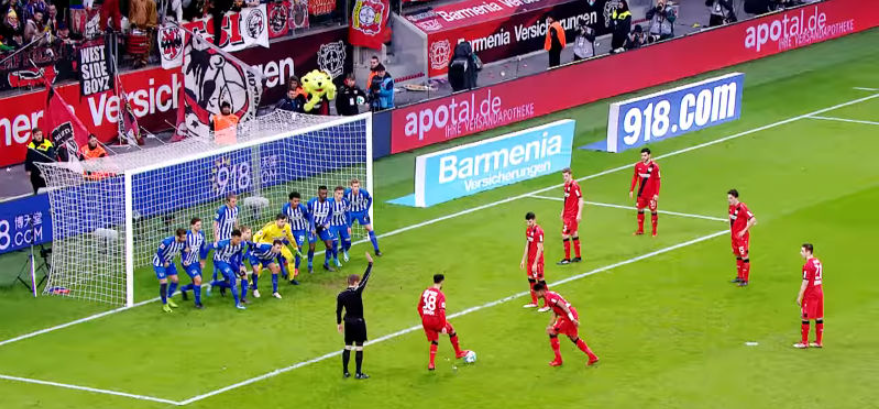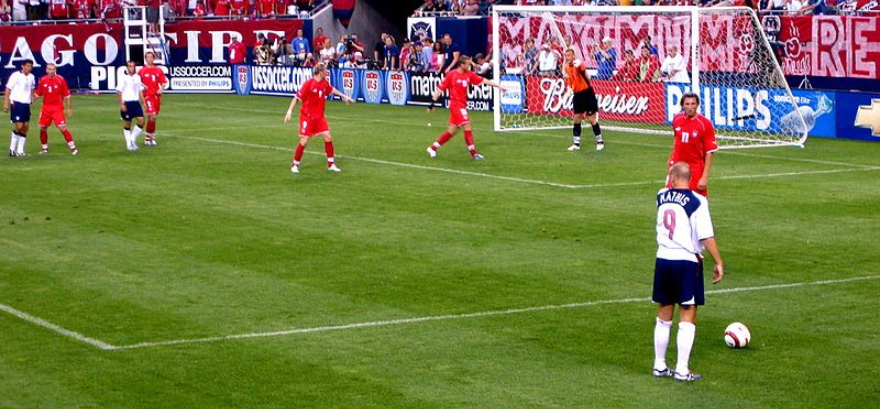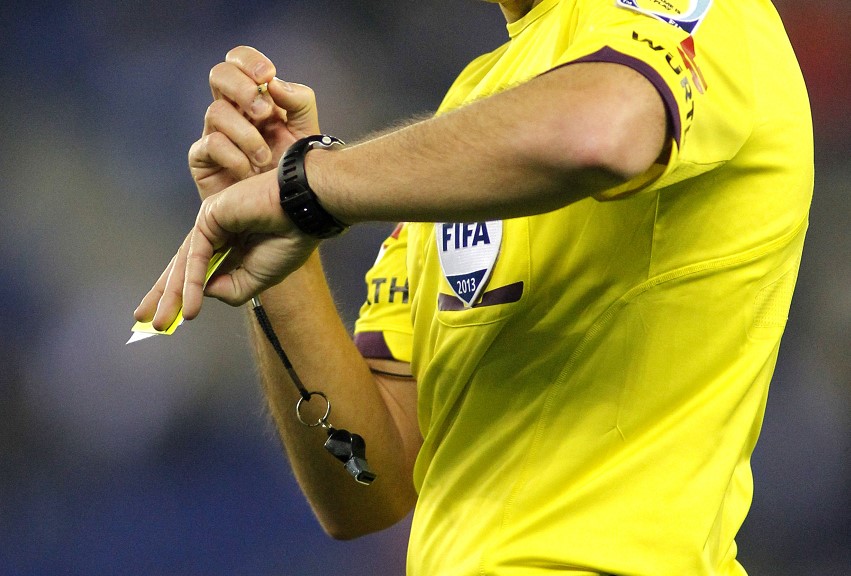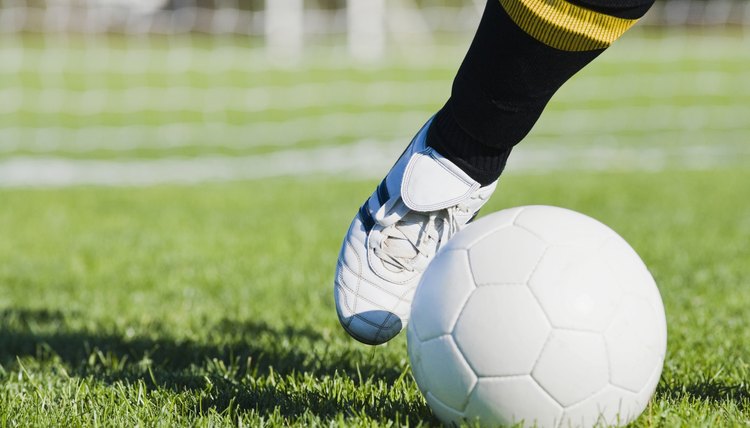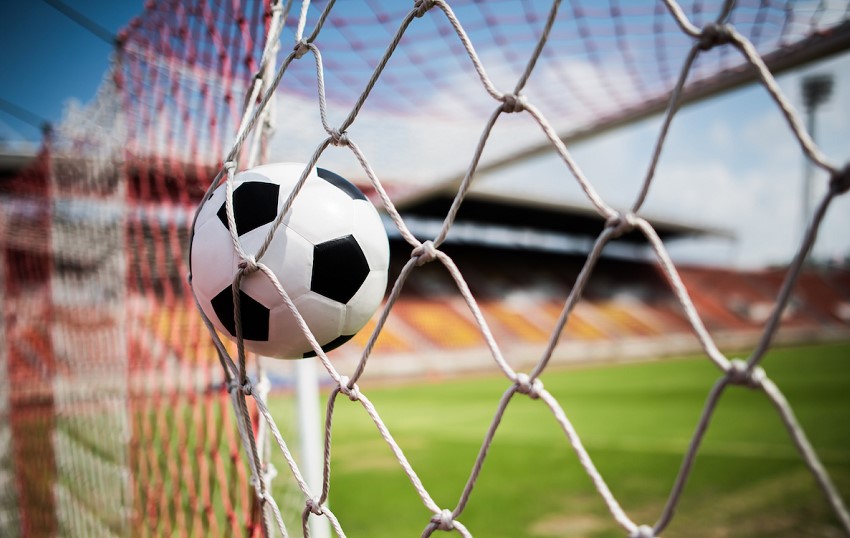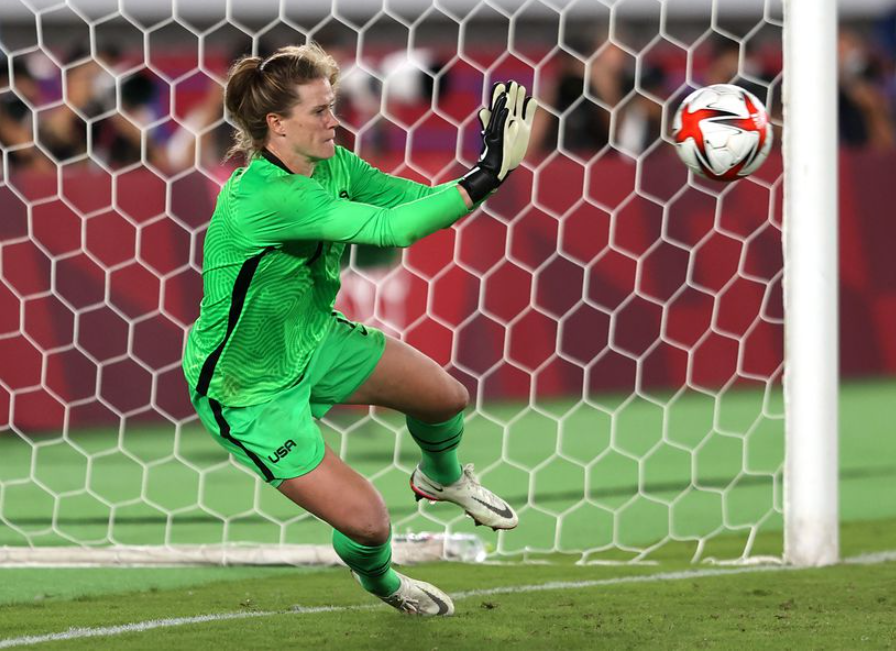
A goalkeeper plays a unique role in a soccer team. It is the person who is allowed to handle the ball while playing soccer. He is the final line of defense against the opposing team. Often, when the match ends in a draw, it is up to the goalkeeper to win or lose the game for their team. So, it’s no surprise that a solid chunk of football rules is dedicated to goalie limitations.
In this article, we’ll take a look at some of the most important rules regulating the handling of the soccer ball by the goalkeeper. Among other things, you’ll learn how long can a goalkeeper hold the ball; what happens if the keeper holds the ball for too long, and under what circumstances a goalkeeper is forbidden to hold the ball.
Hands off the ball
So, first things first, how long can a goalkeeper hold the ball? The rule of thumb is that a soccer goalie is not allowed to hold the ball for more than six seconds within their own penalty area. What happens if the goalie holds the ball for more than 6 seconds? If the goalkeeper breaks the rule, the opposing team is awarded an indirect free kick.
Why does this rule exist?
A pretty strict but necessary regulation. You see, while the goalkeeper has control of the ball, other players are not allowed to retake it from him. So without the six seconds rule, the goalkeeper would be able to hold the ball for the entirety of the game. That would make for a very long and boring match.
What is an indirect free kick?
A free kick is an unhindered kick of a stationary ball. An indirect free kick implies that the player cannot perform a direct goal shot, i.e., the ball must first touch another player. So basically, if a goalie holds the ball for more than six seconds, the game should be stopped and the ball should be given to the opposite team.
That’s the step-by-step of what happens next.
The procedure
The ball will be placed at the location of the foul.
A player of the non-offending team will kick the ball to his teammate.
Until the ball is kicked, the goalkeeper’s team is not allowed to recapture it.
The player will then kick the ball to his teammate. If, on the other hand, the player attempts to shoot the ball directly at the goal, an indirect free-kick restart is enforced.
That is the theory. The real-life rule is somewhat more complicated, however. Let’s delve into it.
Rules are made to be broken
If you watched one game of football in your life, you could have noticed that usually, the goalie holds the ball for more than six seconds. So, is your mind playing tricks on you? Is the 6-second rule for a goalkeeper still apply? Maybe there’s been some change?
The rule
No, there wasn’t. The rule has been implemented by FIFA in 1998 and has not been redacted since. Here is the direct extract from the rules:
“An indirect free kick is awarded if a goalkeeper, inside their penalty area, commits any of the following offenses… controls the ball with the hand/arm for more than six seconds before releasing it”.
Pretty straightforward but in order to understand why the rule is so rarely enforced, it is important to look at the extract more thoroughly.
Control of the ball
The six seconds countdown is supposed to start as soon as the goalkeeper gains control of the ball. What it means to be in control of the ball.
A goalie is in control of the ball if:
- the ball is in between his/her hands;
- the goalie is holding the ball in hand;
- the ball is between his/her hand and any other surface, including the body of the goalie;
- the keeper is touching the ball with his/her hand or arms, with the exception of when the ball bounces off the keeper’s own body;
- the goalie can bounce the ball off the ground, or throw it into the air, the ball would still be technically in the goalkeeper’s control.
The penalty area
So in theory, a soccer goalkeeper has quite a lot of freedom when he gets to handle the ball. Can a soccer goalie carry the ball? Yes. Can the goalie throw it into the air? Yes. It can even be bounced off the ground like in basketball. And while the goalie’s in control of this thing, nobody’s allowed to take it from him. And it can go on for up to six seconds.
However, the ball must be in the penalty area. Outside of the penalty box, no one is allowed to touch the ball with their hands. The only exception being is when a throw-in is performed. During a throw-in, any player may hold the ball.
So, what is the answer to how far can a soccer goalie carry the ball? As far as the area stretches.
Restarting the timer
Can the keeper put the ball on the ground, thus stopping the six-second count? No. According to the rules, the goalie cannot drop the ball, and then pick it up to retain possession of it. Once the ball is placed on the pitch, it must be kicked.
Eyes on the ball
However, all these rules only apply when the ball is in the penalty box. Not the goalie, the ball.
Let’s look at a couple of examples.
Suppose the ball is outside of the box. Even if it is really close to the line, the goalie can’t just dive out of his own penalty area to get it. The rule still stands: no one is allowed to hold the ball outside of the area.
In the reverse situation, however, the goalie can just have at it. If the ball is inside the box, the keeper can just reach in and take it.
Back pass rule
There’s another important rule, the so-called back-pass rule. According to the laws of football, the goalkeeper cannot take possession of the ball when it is deliberately kicked to him by a member of the same team.
The reason
The reason for the rule is pretty obvious. It was created to stop players from stalling for time by constantly kicking the ball to the keeper.
You might’ve noticed that I only used the word kicking here. It is no accident. According to the rules, the keeper can take control of the ball if his teammates passed to him using their head or chest. So, that’s a little bit of soccer trivia.
Is the six seconds rule followed?
Now that we defined all the important terms, let’s get back to the beginning. Is the rule of six seconds followed and enforced? The answer is no. The referees very rarely enforce the rule.
Is the penalty kick ever awarded?
In most cases, referees prefer to ignore the rule and turn a blind eye to it. And it is not about negligence.
The thing is that referees would rather resort to other ways of communicating with the goalkeeper. They won’t just award an indirect free kick right away. A good referee will always act in accordance with the situation.
What actually happens
First, they might just tell the goalie to hurry up. If the instruction is ignored, the referee would warn the goalie about the consequences of wasting time. Eventually, they might even give the yellow card.
In general, most of the time, this whole exchange takes just slightly more than six seconds.
Why is that?
So, how long can a goalkeeper hold the ball? The answer is: It’s about the referee’s discretion. The rule is there, but it is common knowledge that the goalies will be allowed to have some wiggle room. In general, referees are reluctant to call a goalkeeper foul.
You wouldn’t want to overtax the referee’s patience, though, for it can cost you the game.
Punishment for the soccer goalie
This is one of the most famous examples of when a team lost the game because of the 6-second rule.
It happened during the match between Liverpool FC and FC Girondins de Bordeaux on November 26, 2015. It was Europe League.
The goalkeeper of the Bordeaux, Simon Mignolet, took control of the ball. But did not release it right away. In fact, he proceeded to hold the ball for a total of 22 seconds, ignoring all the warnings of the referee.
Mignolet was acting as though he was trying to decide where to pass the ball. In reality, he was clearly stalling for time, since the score was 1-1 at the moment.
The win for the opposing team
The referee wasn’t buying any of that. As the timer hit the 22-second mark, the game was stopped and the indirect free kick was awarded.
After that, the Liverpool player, Jaroslav Plasil, passed the ball to his teammate, Henry Saivet, who successfully scored the second goal for Liverpool, ultimately winning the game.
So as you can see, under certain circumstances, the rule is enforced, and the result is often devastating for the goalie’s team.
Conclusion
As you can see, the laws of football might be a little bit confusing sometimes. So, how long can a goalkeeper hold the ball? Basically, for up to 6 seconds unless the referee decides otherwise.
This answer might seem somewhat anticlimactic to some people, but in my opinion, this makes a lot of sense. This unpredictability is, to some extent, what makes the game so beautiful. There are so many variables to take into account. The score of the game, the behavior of the goalkeeper, and the experience of the referee.
It doesn’t mean of course that the rules of football are not followed. Some of them are just flexible. The referees are allowed more freedom in their decisions since every game of football is always unique. Anyway, the game between Liverpool and Bordeaux was definitely an extreme example.
Whether you’re an amateur playing goalie or just a fan of the soccer game, knowing these intricacies is always useful.
So, I hope this article will help you to better understand the exciting world of football.
Read also: How long are professional soccer games? (college and high school & penalty shootout)
